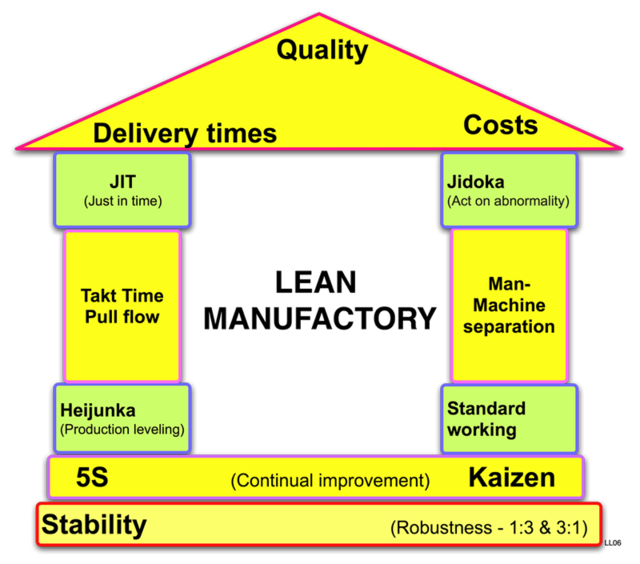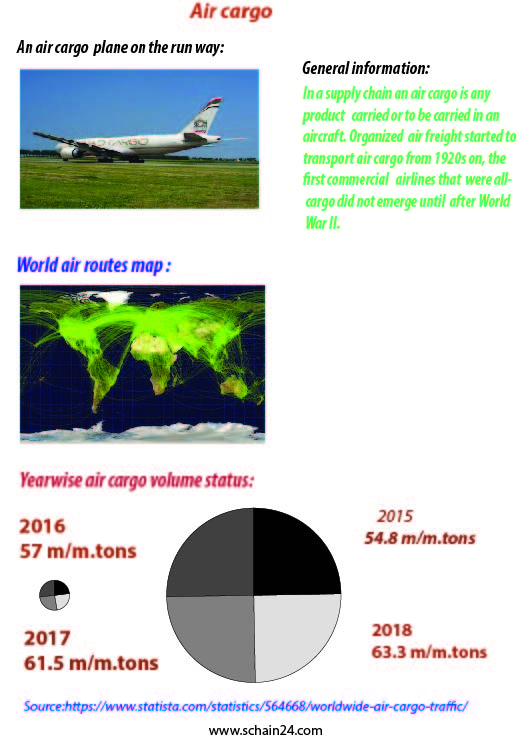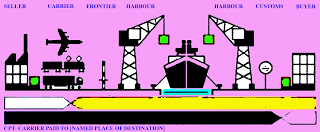Abstract
The popular definition of Lean Manufacturing and the Toyota Production System conventionally consists of the following: To solve the quandary of waste, Lean Manufacturing has The TPS is often used interchangeably with the terms Lean Manufacturing and Lean. Even more importantly, a Lean process is characterized by Lean and the Toyota Production System. The main reason of Lean Manufacturing or TPS is every step of manufacturing should be improved. Lean manufacturing involves never ending efforts to eliminate or reduce “Muda“, a Japanese term used to reduce waste, which does not add value to Supply Chain while make design, manufacturing, distribution and customer service processes in the respective Supply Chain. Things are visually displayed: For communicating with all sorts of people in the factory /supply chain unit visual displays are used as a great tool in the lean manufacturing process.Some techniques used in Lean Manufacturing to eliminate errors of the equipment operator.
Keywords: TPS,Muda,Lean, 5s,Six Sigma etc.
Introduction:
Lean manufacturing is a synchronized method with which a supply chain can eradicate waste from its production process. According to customer needs, production process is required to develop, so that produced goods become more valuable product in quality. In contemporary manufacturing many supply chains are taking help of lean manufacturing method, so that production become less defective, machinery and raw materials are used in a proper way, eliminating waste as much as possible. It is an approach of identifying and eliminating waste through continued improvement. It emphasizes process waste also, so that they achieve success in the shortest possible cycle time. And makes the operation efficient enough consisting only value added steps.
 |
Lean Manufactory House
|
Lean manufacturing and TPS
Lean The popular definition of Lean Manufacturing and the Toyota Production System conventionally consists of the following: To solve the quandary of waste, Lean Manufacturing has The TPS is often used interchangeably with the terms Lean Manufacturing and Lean Even more importantly, a Lean process, be it the TPS or another, is characterized by Lean and the Toyota Production System To further explore the depth of what a Lean Manufacturing system authentically is, we will not because the TPS is the best Lean system around. The main reason of Lean Manufacturing or TPS is every step of manufacturing should be improved. It is required to be highly responsible to the consumer requirements, using possible less time and highest quality.
Muda:
Lean manufacturing involves never ending efforts to eliminate or reduce “muda”( Japanese term used to reduce waste, which does not add value to Supply Chain) while make design, manufacturing, distribution and customer service processes in the respective Supply Chain.
Lean Six Sigma:
A management approach used for solving problems and improving processes, combining Six Sigma and Lean Manufacturing tools.
Kaizen:
Kaizen is a Japanese term, which mention about gradually approaching higher standards in enhancing quality and reducing waste, while involving all levels of staff in a company or a Supply Chain. Lean manufacturing tools usually used in an apparel supply chain are as follows:
5S:
Sorting things in a Supply Chain workplace and facilities. Cleanliness arrangements and keeping things well arranged are emphasized.
Things are visually displayed:
For communicating with all sorts of people in the factory /supply chain unit visual displays are used as a great tool in the lean manufacturing process. Necessary information, production board at the end of production line, mocks of sewing operation, quality procedure, exit signs are openly displayed; so that errors are minimized in manufacturing and even in the whole supply chain.
Standardization of the work process:
Factory and supply chain as a whole has to set standardized working method, so that manufacturing related wastes and non-value added tasks can be eliminated. While one follows standardized methods errors are minimized.
Quick Changeover:
One of the Lean tools is using “quick changeover” methods, so that change in the manufacturing line can be done more quickly, saving time. In a garment industry manufacturing facility, when a new style is started production, there is considerable set up time losses. Lean methods could be used to reduce set up time loss.
Error Proofing Techniques:
Some techniques used in Lean Manufacturing to eliminate errors of the equipment operator. The purpose of the techniques are preventing, correcting or drawing attention to humanly errors as they occur. This can even include information generation, reporting etc.
Kanban:
Kanban is used as a workplace system tool, which improves visibility and helps to eliminate building excess work in process (WIP) in production lines and facilities.
Problem Solving Tools:
Ishikawa’s Fish Bone Program and Five Why’s are widely used in problem solving. Such manufacturing areas, which are widely changing over time, such as making clothing products, garments manufacturers, need to work with latest products, new machine and materials. To meet our business goal, we need to use them as a team.
Workload balancing tools:
In a sewing line meant for mass production, department to department, process to process work load balance is necessary. Lean manufacturing gives emphasis on workload balance, which is very positive for a manufacturing facility in apparel supply chain.
Conclusion:
The accepted architect of the TPS is Taiichi Ohno, the Chief Engineer of Toyota for many years. Others contributed greatly, including Shigeo Shingo and the members of the Toyota family, but Ohno gets most of the credit for its engenderment, development, and implementation. Ohno may get most of the credit because he indicated the most about it, or maybe just did the most about it. Neither is consequential. What is paramount is that the TPS categorically, and Lean Manufacturing in general, is a tremendous contribution to society and manufacturing in particular and we owe an immensely colossal debt of gratitude to those individuals who engendered it and caused it to mature even further. [1] Lean production system was first introduced in Toyota, Japan. This is not only a set of production methods, but a philosophy also. A good number of Apparel factories are introducing Lean Manufacturing techniques to enhance productivity and business.





Its very good blog and more informative content about the lean certification.This certificate is very important and will give more knowledge and improve skills. it is literally the process of learning and progressing through the body of knowledge of your own world.
Lean Management Certification
lean supply chain described easily great blog
Lots of good advices here but I want to plead with the topic about Kaizen Training
more clearly, thanks for sharing dear, I'd like to appreciate you for this too !
I am appreciated. And would like to know yr email address, so that can send new article to yu by email through mailchimp.com as a normal process of my blog.
Hi thanks and please let me know your email address to send new articles to yr email.
Thanks for yr comment.Pls let me know yr email to send yu new article to yu as a normal process of my blog.
Hi, I am appreciated and thank you. Pls let me know yr email address so that can send yu new articles to yu as a normal plogging process through mailchimp.
KnowledgeCert is a pioneer in providing the professional certification course like Six Sigma Certification in US & would like to present to you our upcoming ITIL Intermediate Course Boot Camp in US.Take advantage of World Class Training!
I am very very happy to discover this webstie. I needed in order to thanks to the period, as well as on this superb research We certainly valued every little bit of this kind of, as well as have already a person guide designated to check out brand new things.
So far your query is about salary range in supply chain.
Salary range and position are varied same as other positions of a company such as Accounts,HRD etc.
Some companies are higher paying ,some are not.